Classiebawn Castle stands as a majestic testament to architectural grandeur and historical depth on the Mullaghmore Peninsula near the village of Cliffoney, County Sligo, Republic of Ireland. Built in the late 19th century for the 3rd Viscount Palmerston, a prominent British statesman, the castle is constructed from distinctive yellow-brown sandstone sourced from County Donegal. Designed in the Victorian-Baronial style by Dublin architect J. Rawson Carrol, its commanding presence is highlighted by a central tower topped with a conical roofed turret, making it an emblematic feature of the Atlantic coastline.
The castle’s picturesque setting against the dramatic backdrop of the rugged Sligo landscape has made it one of the most photographed locations in the region. Perched on a hill overlooking the vast ocean, Classiebawn Castle not only dominates the local scenery but also captures the imagination of those who visit or view it from afar. Its visual appeal and the stories encapsulated within its walls contribute significantly to its status as a cultural and historical icon in County Sligo.
Contents
Historical Background
Classiebawn Castle’s origins and its storied past are intertwined with the broader historical currents of Ireland, particularly the contentious shifts in land ownership that have marked its history. The castle stands on land that was once part of a much larger estate, deeply connected to the local and national narratives of power, rebellion, and retribution.
The O’Connor Sligo Family and Their Legacy
Originally, the land on which Classiebawn Castle now stands was owned by the O’Connor Sligo family. This family was part of the ancient Gaelic nobility, whose roots in the region date back to medieval times. The O’Connors were significant figures in the history of County Sligo, involved in many of the political and military struggles of their era. Their ownership of the land reflects the traditional Gaelic system of landholding and clan leadership, which was characterized by a strong connection to their ancestral territories.
Confiscation and Reallocation
The landscape of ownership changed dramatically in the 17th century, a period marked by intense conflict and rebellion against English rule in Ireland. Following the Irish Rebellion of 1641, a brutal and chaotic uprising against the plantation policies imposed by the English government, the English Parliament enacted punitive measures against the Irish rebels. One of these measures was the confiscation of land from those implicated in the rebellion.
The estate that would later become the site of Classiebawn Castle was confiscated during these retributive actions. It was granted to Sir John Temple, an English lawyer and government official who held the position of Master of the Rolls in Ireland. Sir John Temple was notably involved in the administrative and legal processes that underpinned the English government’s attempts to suppress the rebellion and impose control over the Irish population.
The Significance of the Grant to Sir John Temple
The grant of land to Sir John Temple was not merely a reward for his services but also part of a broader strategy by the English Crown to “plant” Ireland with loyal English and Scottish settlers. This policy aimed to establish a population loyal to the Crown and thereby reduce the influence of the native Irish gentry. The transfer of the O’Connor Sligo estate to an English administrator symbolized the displacement of the traditional Gaelic order by a new regime oriented towards the interests of the English government.
This transfer had long-lasting effects on the region’s socio-political landscape. It was reflective of the numerous challenges faced by the Irish aristocracy under English rule, many of whom lost their lands and influence due to similar policies. The history of the land on which Classiebawn Castle stands is a microcosm of the larger historical struggles over land and power in Ireland, making the castle not just a private estate but also a monument to these turbulent times.
The implications of these historical dynamics are still felt today, as they continue to influence the cultural and historical consciousness of the region. Classiebawn Castle, with its majestic architecture and dramatic location, stands as a lasting reminder of a complex past, woven into the very fabric of Irish history.
Architectural Features
Classiebawn Castle is a striking example of Victorian-Baronial architecture, a style that became popular in the 19th century as a romantic vision of Scotland’s feudal past. This architectural style is characterized by its robust and rugged features, designed to evoke the grandeur and gravity of medieval fortresses and castles. Classiebawn’s design embodies this historical aesthetic, blending functional elements of a country house with the ornamental and symbolic features of a traditional castle.
Victorian-Baronial Style
The Victorian-Baronial style of Classiebawn Castle features elements such as battlements, turrets, and gables, which are commonly associated with the Gothic revival in architecture but adapted to fit the Victorian era’s tastes and technological advancements. The castle’s design includes a variety of traditional motifs such as stepped gables, crenelated parapets, and overhanging towers. These features not only enhance the building’s dramatic silhouette but also function as a visual link to Scotland’s historical architectural style, reflecting the cultural and historical romanticism prevalent during the Victorian period.
Materials and Construction
Classiebawn Castle is constructed from a distinctive yellow-brown sandstone, sourced from County Donegal. This choice of material not only provides the castle with its robust physical presence but also contributes to the aesthetic harmony between the building and its coastal environment. The sandstone gives the castle a naturalistic texture that blends with the rugged landscape, echoing the colors of the surrounding earth and cliffs.
The transport of this sandstone by sea underscores the logistical challenges and the architectural ambition involved in the castle’s construction. This effort reflects the importance placed on using authentic and high-quality materials to achieve the desired aesthetic impact and durability.
Central Tower and Conical Roofed Turret
One of the most defining features of Classiebawn Castle is its central tower, capped by a conical roofed turret. This tower serves as both a focal point in the structure’s composition and a functional element, offering panoramic views of the Atlantic Ocean and the surrounding landscape. The turret is not merely decorative; it is integral to the castle’s defensive architectural heritage, embodying the fortification aspects of a traditional castle.
The conical roof of the turret adds a distinctive vertical element to the castle’s profile, enhancing its fairytale-like appearance and making it a landmark visible from miles around. The use of such a feature is typical of the Baronial style, where the interplay of dramatic rooflines and towering structures is used to create a picturesque outline against the sky.
The Palmerston Era
The construction of Classiebawn Castle and the development of its surrounding estate are closely tied to the life and ambitions of Henry John Temple, the third Viscount Palmerston. A prominent British statesman who served twice as Prime Minister of the United Kingdom, Palmerston was a figure of considerable influence and vision, and his impact on the Mullaghmore area was both profound and lasting.
Initiating the Castle’s Construction
Viscount Palmerston inherited the estate in County Sligo while he was still young, following a familial lineage of landownership in Ireland. Recognizing the potential of the estate not just as a landholding but as a seat of personal and political power, he embarked on an ambitious project to build a residence that reflected his status and aspirations. The choice of the Baronial style for Classiebawn Castle’s design was likely influenced by the Victorian era’s romanticism of medieval architecture and its association with strength and nobility—qualities that Palmerston would have been keen to embody in his Irish residence.
The construction of Classiebawn began in the mid-19th century but was not completed during Palmerston’s lifetime. His death in 1865 meant he never saw the completed castle, a project that would only be finalized in 1874 by his stepson and successor, William Cowper-Temple. Despite this, the initiation and partial completion of the castle during Palmerston’s tenure laid the foundation for its future and shaped much of the estate’s development.
Plans for the Estate and Village of Mullaghmore
Palmerston’s plans for the estate extended beyond the construction of Classiebawn Castle. He envisioned a comprehensive development of the surrounding area that would improve the living conditions of his tenants and enhance the economic and social infrastructure of the region. This vision included the building of roads, the improvement of agricultural practices, and the development of Mullaghmore Harbour.
Mullaghmore Harbour was particularly significant, as it was developed to facilitate the growing maritime activities that supported the local economy, including fishing and trade. Palmerston’s investments in the harbour made it a vital part of community life, creating jobs and supporting the village’s sustenance. These improvements reflected his broader approach to estate management, which focused on modernization and economic development.
Moreover, Palmerston’s engagement with the village of Mullaghmore did not stop at economic development. He also took steps to improve educational opportunities by supporting the construction of schools. His approach was somewhat paternalistic, typical of the era, aiming to foster loyalty and productivity among the local population through benevolence and improvement in living standards.
Legacy of the Palmerston Era
The Palmerston era marked a time of significant change and development for the Classiebawn estate and the village of Mullaghmore. Although the Viscount himself did not live to see his plans fully realized, his initiatives laid the groundwork for future developments and left a lasting impact on the area. Classiebawn Castle, as completed by his descendants, stood as a symbol of his ambitions and his lasting influence on the Irish landscape, embodying both the personal legacy of a Victorian statesman and the broader historical movements of the time.
Successive Owners
Classiebawn Castle has passed through the hands of several prominent owners since its completion in the late 19th century. Each of these owners has left their mark on the estate, contributing to its rich history and the development of the surrounding area.
1. William Cowper-Temple, 1st Baron Mount Temple (1811-1888)
After the death of Viscount Palmerston, Classiebawn Castle was completed by his stepson, William Cowper-Temple. Inheriting the estate in 1865, Cowper-Temple oversaw the final stages of construction, with the castle being completed in 1874. His tenure was marked by a continuation of Palmerston’s policies of improving tenant welfare and developing local infrastructure. However, unlike his stepfather, Cowper-Temple was more involved in the spiritual and educational upliftment of the community, reflecting his personal interest in theosophy and progressive social ideas.
2. The Hon. Evelyn Ashley (1836–1907)
The estate next passed to The Hon. Evelyn Ashley, nephew of William Cowper-Temple, in 1888. Evelyn, a liberal politician and biographer, maintained the estate while partaking in its traditional country pursuits. He is noted for his contributions to the local community, including regular stays at the castle which helped to sustain the local economy. His tenure saw no major architectural changes to Classiebawn itself but continued the tradition of active and benevolent landlordship.
3. Wilfrid Ashley, 1st Baron Mount Temple (1867–1939)
Wilfrid William Ashley, son of Evelyn Ashley, inherited the estate in 1907. His period of ownership saw Classiebawn used primarily as a summer retreat. Politically a Conservative, Wilfrid’s management of the estate reflected more conventional Edwardian aristocratic values compared to his father’s liberal leanings. The castle and estate remained well-maintained but relatively unchanged during his tenure.
4. Edwina Ashley, Countess Mountbatten of Burma (1901–1960)
Upon the death of Wilfrid Ashley, his daughter Edwina inherited Classiebawn Castle. Married to Lord Louis Mountbatten, the castle saw a revival as a vibrant social hub during their ownership. Significant modernizations were made during this time, including the installation of electricity and modern plumbing. The castle was rarely fully occupied but served as a glamorous venue for social gatherings and as a summer retreat for the Mountbatten family.
5. Lord Louis Mountbatten (1900–1979)
Following Edwina’s death in 1960, Lord Mountbatten became the sole owner of Classiebawn. He continued to use the castle as a summer home, hosting various notable figures and continuing the castle’s legacy as a site of significant social gatherings. His time as owner ended tragically when he was assassinated by the IRA in 1979, an event that cast a long shadow over the castle and its legacy.
6. Hugh Tunney (1928–2011)
After a period of relative quiet following Mountbatten’s death, the castle was bought by Hugh Tunney, a businessman from County Tyrone, in 1991. Tunney carried out extensive renovations and improvements, modernizing the living spaces and enhancing the estate’s agricultural productivity. His ownership marked a shift from aristocratic leisure to more practical and business-oriented management of the estate.
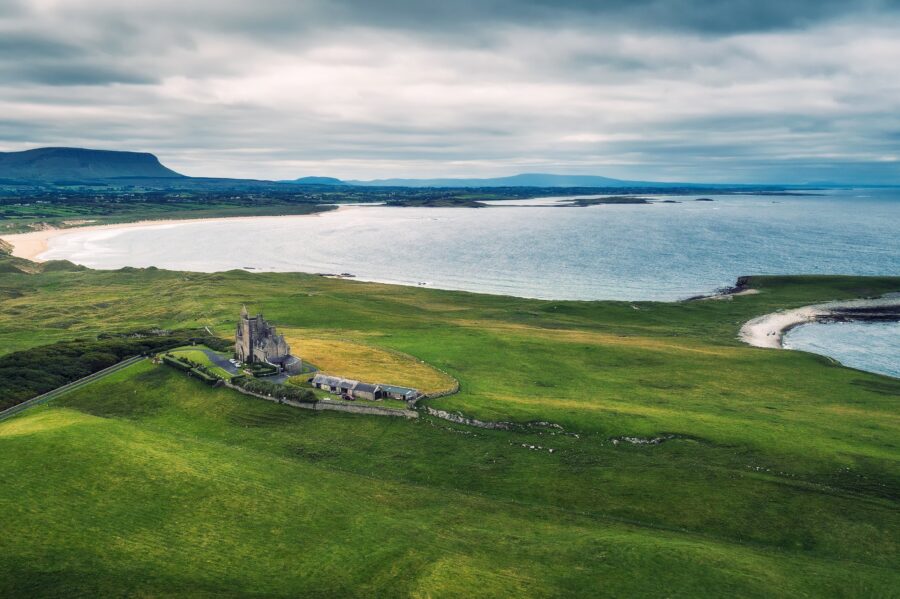
Key Changes and Events
Each owner of Classiebawn Castle has contributed to its history and legacy through both physical changes and their individual impacts on the community and the estate’s role in broader historical events. From its completion in the Victorian era to modern improvements and tragic associations with political violence, Classiebawn Castle has mirrored the changing fortunes and societal shifts of Ireland itself.
The Mountbatten Years
The tenure of Lord Louis Mountbatten at Classiebawn Castle represents one of the most colorful and impactful chapters in its history. As a prominent British statesman, naval officer, and cousin to the British royal family, Mountbatten brought a unique blend of royalty, military prestige, and cosmopolitan flair to this historic Irish estate.
Attachment to the Castle
Lord Louis Mountbatten first came into ownership of Classiebawn Castle through his wife, Edwina Ashley, who inherited it from her father. Mountbatten was immediately taken with the grandeur and strategic location of the castle, perched as it is with commanding views over the Atlantic Ocean. He was known to have a deep affection for the castle and its surroundings, considering it a beloved retreat from his duties in Britain and later, from his international responsibilities. His personal letters and diaries reflect a profound attachment to the estate, where he found both solace and a delightful escape, enabling him to indulge in his love of sailing, fishing, and the natural environment.
Modifications and Lifestyle
During their tenure, the Mountbattens made several significant modifications to Classiebawn Castle to suit their lifestyle, which was marked by both luxury and practicality. Recognizing the limitations of a 19th-century structure, they installed modern amenities including electricity, a mains water supply, and updated the plumbing systems, bringing the castle up to the comfort standards expected by guests of their standing. The interior decor was refreshed to reflect a more contemporary taste, although the exterior remained largely unchanged to preserve its historical integrity.
The lifestyle at Classiebawn during the Mountbatten years was one of grandeur mixed with the casual informality prized by the mid-20th-century aristocracy. The castle was often filled with guests: political figures, royals, celebrities, and intellectuals who enjoyed the Mountbattens’ renowned hospitality. The estate provided a perfect backdrop for both leisure activities and formal gatherings, with the Mountbattens playing gracious hosts.
Tragic IRA Attack
However, the tranquility of this idyllic retreat was shattered on August 27, 1979. Lord Mountbatten was assassinated by the Irish Republican Army (IRA) in a tragic attack that also claimed the lives of several members of his family and a local teenager. They were aboard his fishing boat, which was blown up by a bomb off the coast near the castle. This attack not only ended Mountbatten’s life but also marked a dark turn in the history of Classiebawn Castle, casting a long shadow over the property that had once been a symbol of cross-cultural connection and peace.
The assassination was politically motivated, part of the broader conflict in Northern Ireland and a stark reminder of the ongoing tensions between different factions in Ireland and the UK. Mountbatten’s death was felt deeply across the world and particularly in Mullaghmore, where he had been a well-known and generally well-regarded figure.
Current Status
Since the tragic events of 1979 and following the passing of Lord Louis Mountbatten, Classiebawn Castle has experienced a quieter phase under the stewardship of subsequent owners, notably Hugh Tunney, who acquired the property in 1991. Under Tunney’s ownership and beyond, the castle has seen significant renovations and updates that have preserved its historical integrity while adapting it for modern use.
Ownership and Renovations
Hugh Tunney, a businessman from County Tyrone, was the last noted owner who took considerable steps to modernize and maintain Classiebawn Castle. His efforts were focused on updating the infrastructure—ensuring the castle met contemporary living standards while preserving its architectural and historical heritage. These renovations included structural repairs, updating the heating systems, and ensuring that the estate’s vast landholdings were well-maintained and used productively, particularly for agriculture.
After Tunney’s death in 2011, the estate’s management continued to uphold his commitment to maintaining the property, though specific details on subsequent ownership and management are less publicly known. The estate remains privately owned, which impacts public access and use.
Usage Today
Classiebawn Castle is primarily used as a private residence and is not generally open to the public. This privacy is consistent with the castle’s historical use as a retreat and private estate for its various owners. However, the castle’s striking silhouette continues to be a landmark for locals and tourists alike, often photographed and admired from public roads and nearby vantage points.
Despite its private status, the castle occasionally serves as a backdrop for special events and has been featured in various media, enhancing its mystique and appeal. Its picturesque setting makes it a sought-after location for photography, film, and small-scale events, although these occur under strict privacy and security provisions.
Public Access and Notable Events
There are no regular public tours or open days at Classiebawn Castle, reflecting the owners’ preference for privacy. The estate’s surrounding areas, however, continue to attract visitors for their natural beauty and the panoramic views they offer of the Atlantic Ocean and the rugged Sligo coastline.
Notable events in recent years have mostly been private in nature, including family gatherings and, reportedly, small corporate retreats or artistic endeavors that respect the seclusion and integrity of the estate. The local community maintains a respectful distance, honoring the castle’s role as a private residence while also cherishing its historical and cultural significance in the region.
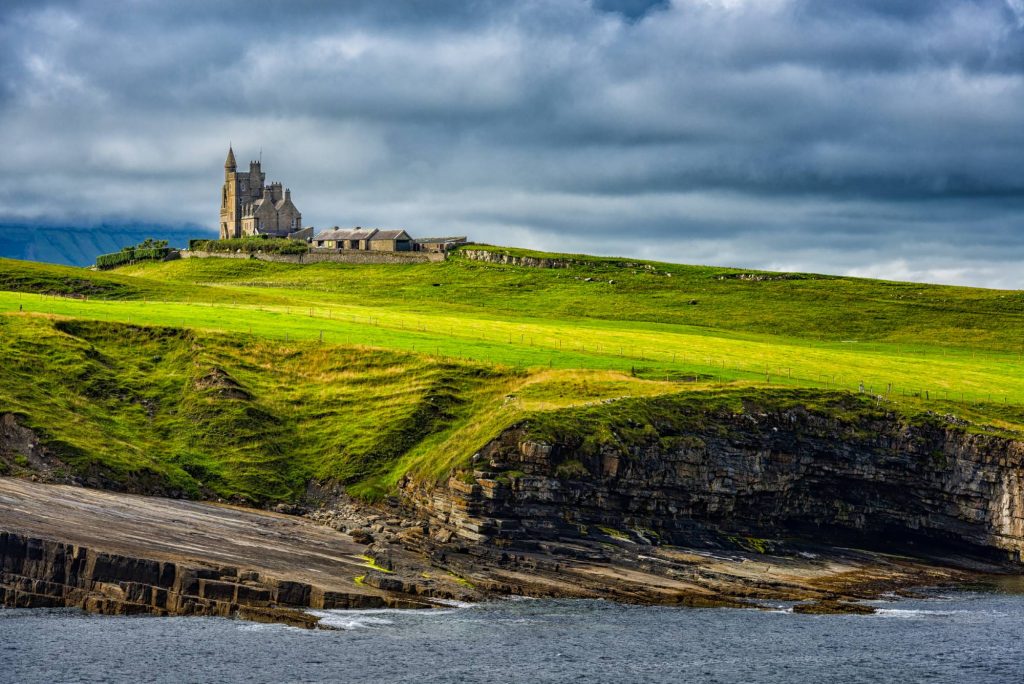


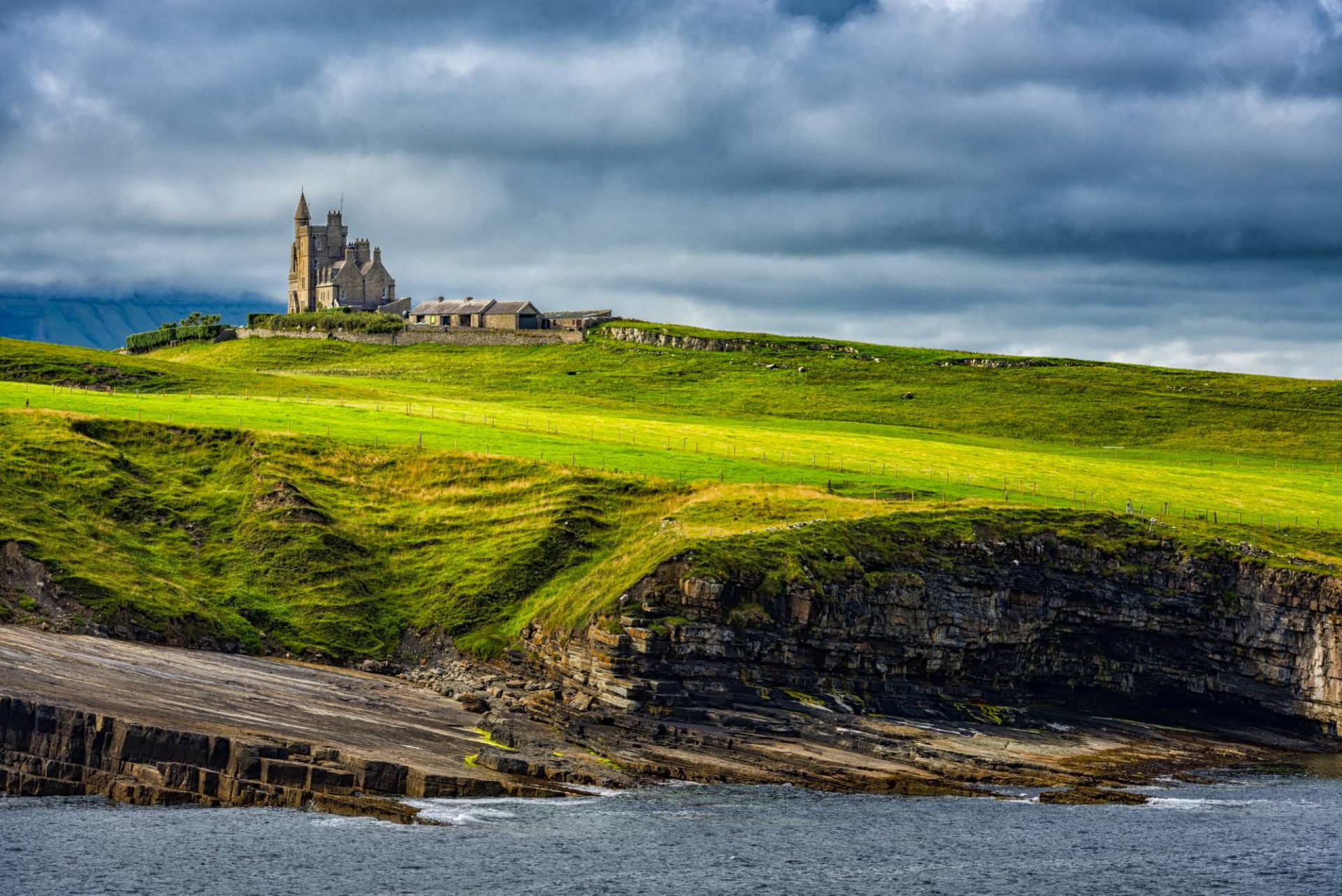
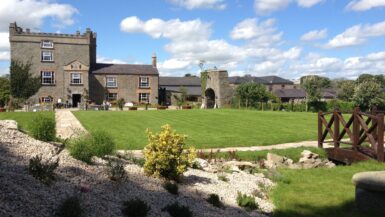
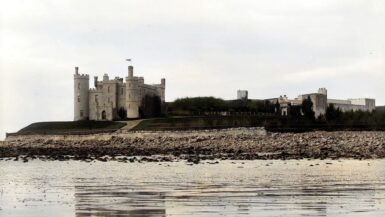
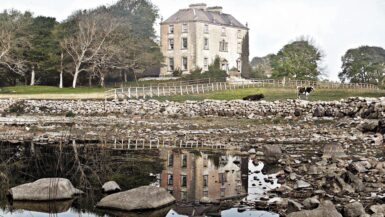
Please send me any info/updates on Classiebawn Castle – it has a special place in my heart.